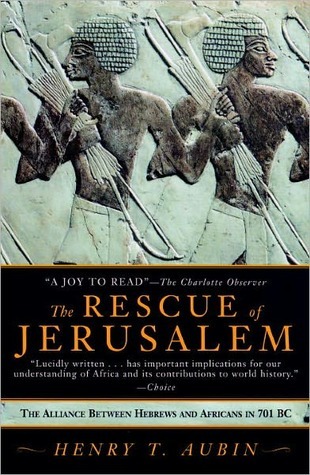Kindle Notes & Highlights
These parallels are all close.
For our purposes, the most pertinent of these is the Exodus’s angel of Yahweh. It is no common angel.
The angel of Yahweh is like another form of Yahweh himself.
Placing a human army—even one that was Hebrew or exclusively Kushite (without Egyptian contamination)—in the heroic role of repelling Sen-nacherib would not have held the same theological message of infallibility.
The revision was tailor-made for comparisons with the Exodus story, and indeed clergy over the millennia have been alert to parallels between the two.
Three archaeologists have separately endorsed the idea that the hornet is a symbol of Egypt.
These archaeologists propose that the writers of three biblical passages used the hornet as a code word for the invasion of Canaan by New Kingdom pharaohs. After Egypt had overcome the Canaanite peoples, these scholars suggest, its eventual departure enabled the Hebrews to settle there. Borowski places this inadvertently helpful Egyptian activity in the 13th century BC.
If these three members of successive generations of mainstream archaeologists are right about the event disguised by the code-name “hornet” being an Egyptian offensive, an obvious question arises. Which offensive did the writers of Deuteronomy have in mind?
Until I had nearly finished the research for this book, I shared the general assumption that today’s scholarship, for all its weaknesses, has nothing to learn from the pre-modern era—a time when archaeological discoveries were few and when, as I believed, methodological primitivism, racial intolerance and religious dogmatism were widespread.
This espousal of a joint epidemic/Kushite-rescue solution—with the Kushites getting credit for the coup de grâce—is not whispered in the fine print of an obscure publication where only a few other specialized scholars will see it.
One of the most influential figures in the Protestant Reformation was, of course, French theologian John Calvin (1509-1564).
The founder of the University of Geneva saw such theological significance in the events of 701 that he devoted fully 70 pages to them in his commentary on the Book of Isaiah.
According to Calvin’s analysis, Egypt and Kush became politically linked for the specific purpose of opposing Sennacherib. They “saw that his power was becoming excessive, and that his invasion of other countries had no limit.”10 In his broadminded view, Kush and Egypt acted “wisely in joining their forces and meeting him early; for separately they would easily have been subdued and destroyed.”
Puzzled by this blizzard of Kushite-demoting opinions starting in the decade of the 1880s, I opened some history books to see what might explain such a sea change.
Ivan Hannaford’s groundbreaking 1996 book, Race: The History of an Idea in the West, shows other influences.
Drawing considerably on Hannah Arendt’s analysis, Hannaford concludes “that there was no fundamental historical movement of racial and anti-Semitic ideas until after 1880.”
How can we explain such an eruption of racist scorn? It did not occur in a vacuum. Starting in 1882, the don found himself in the very cauldron of the first great conflict of Europe’s imperialist assault of Africa.
It is interesting to recall that it was just when the war was at a fever pitch, in the early 1890s, that his views on the Kushites harshened. While before he had regarded them as the “handsomest” of people, at that time he demoted them from their prior status as whites and classified them as Negroes, who to him were subhuman. At that time he also said the Kushites when confronting Sennacherib had been big losers.
The Canaanite people who would have lived in Jerusalem prior to the Bible-described conquest of the city by David (c. 1000 BC) had used the word “Zion” for the hill on which they built their town; the word probably meant fortress or rock. The hill was the home of their deity, Shalem, a West Semitic god.
In the generations prior to 701, then, there is little to suggest that Hebrews would have seen Jerusalem as any more deserving of divine protection than other Hebrew cities.
Yahweh was a great beneficiary of the rescue. Judahites interpreted the outcome of the Assyrian invasion as demonstrating that their national deity was mightier than Ashur. That Yahweh had saved Jerusalem and not any other city—
Hebrew thinkers during the Exile decided that Yahweh’s love for both the city and David’s line had to be conditional. That is, Yahweh’s loyalty depended upon the Chosen People’s loyalty to him.
Kush and its allies within Egypt would pay dearly for their success. In 679, Sennacherib’s son and successor, Esarhaddon, stormed back into Judah and its neighbors. And a few years later, when Taharqa was the pharaoh, his fate and that
All Kushites I deported from Egypt—leaving not even one to do homage to me.
THE POSSIBILITY CONCERNS me that some browsers looking at this book’s concluding chapter may innocently draw the inference that unsympathetic writers of the Hebrew Bible have concealed the fact that Africans saved Jerusalem. That would simply create resentment—and conceivably add to strains in North America between blacks and Jews—where there is no cause. The point is worth restating: the Bible has not deleted the Kushite role.
An additional reason that the biblical version of history becomes relatively reliable starting with events in the eighth century BC is that Hebrew culture appears at that time to have first used alphabetic writing.
The summary in Ecclesiasticus (48:17-25) dates from the second century BC.


